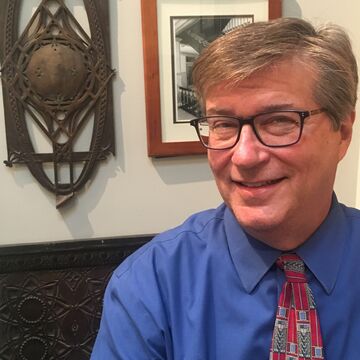| Origins of Modern Architecture |
Art History, Theory, and Criticism |
2500 (001) |
Fall 2025 |
|
Description
This course examines significant developments in European architecture, with regard to structure, function, and style, from the Industrial Revolution in the late 18th century through the outbreak of World War I. Major architects and their works are dealt with in the context of pertinent practical, theoretical, and social issues, to assess the overall prominence of architecture in the period of emergent modernism in Europe.
|
Class Number
1052
Credits
3
|
| Modern European Architecture and Theory: 1890-1965 |
Art History, Theory, and Criticism |
3502 (001) |
Spring 2026 |
|
Description
This course surveys the development of commercial, institutional and residential architecture and interiors in Europe from 1890 to 1965. It examines significant movements and individuals that shaped modern architecture's history through an analysis of the theoretical literature that accompanied the built forms now understood as 'modern.' Seminal texts analyzed include those by Morris, van de Velde, Loos, Gropius, van Doesburg, Le Corbusier, Aalto, Rowe, Stirling and Rossi, among others.
|
Class Number
1060
Credits
3
|
| The Prairie School And Frank LLoyd Wright |
Art History, Theory, and Criticism |
3504 (001) |
Spring 2026 |
|
Description
This course examines the career of America's best known architect alongside the work of his followers. Consideration is given to the origins of the Prairie School, how it achieved broad patronage, and why its popularity declined after World War I. Also examined are the Prairie School's eclecticism, its relationship to modernism, and its principles of organic design. On-site explorations include Wright's Oak Park Home and Studio and the Wright Prairie School Historic District in Oak Park. Other architects considered for their interpretations of the style are W.B. Griffin, B. Byrne, Tallmadge and Watson, W. Drummond, and G.W. Maher.
|
Class Number
1086
Credits
3
|
| Chicago Arch & Public Sculp |
Art History, Theory, and Criticism |
4508 (001) |
Summer 2025 |
|
Description
Between its incorporation in 1833 and the world's fair of 1933, Chicago was internationally the most important site for development of modern architecture. From the commercial buildings of Burnham and Root or Adler and Sullivan to the domestic architecture of Frank Lloyd Wright and the Prairie School, Chicago was on the 'cutting edge.' This architectural 'century of progress' is explored through field trips and on-site lectures. Chicago and its suburbs are the class's 'museum.'
|
Class Number
1148
Credits
3
|
| Chicago Arch & Public Sculp |
Art History, Theory, and Criticism |
4508 (001) |
Fall 2025 |
|
Description
Between its incorporation in 1833 and the world's fair of 1933, Chicago was internationally the most important site for development of modern architecture. From the commercial buildings of Burnham and Root or Adler and Sullivan to the domestic architecture of Frank Lloyd Wright and the Prairie School, Chicago was on the 'cutting edge.' This architectural 'century of progress' is explored through field trips and on-site lectures. Chicago and its suburbs are the class's 'museum.'
|
Class Number
2152
Credits
3
|
| Chicago Arch & Public Sculp |
Art History, Theory, and Criticism |
4508 (002) |
Fall 2025 |
|
Description
Between its incorporation in 1833 and the world's fair of 1933, Chicago was internationally the most important site for development of modern architecture. From the commercial buildings of Burnham and Root or Adler and Sullivan to the domestic architecture of Frank Lloyd Wright and the Prairie School, Chicago was on the 'cutting edge.' This architectural 'century of progress' is explored through field trips and on-site lectures. Chicago and its suburbs are the class's 'museum.'
|
Class Number
2475
Credits
3
|

